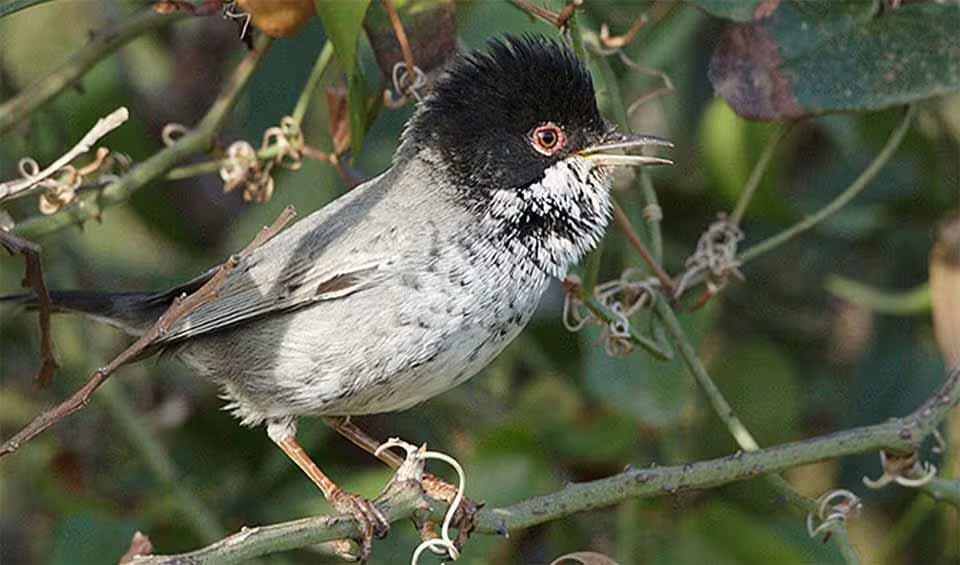A small, charming bird native to the Mediterranean island of Cyprus. This bird is a true symbol of the island’s unique biodiversity and is found only in Cyprus and parts of Turkey.
One of the most distinctive features of the Cyprus warbler is its bold and contrasting plumage. Males are particularly eye-catching with their black heads, throats, and chests, which sharply contrast with their white underparts and grayish upperparts. They also have white streaks running down their flanks, adding to their striking look. Females are less conspicuous, with a more subdued coloration of brownish-gray upperparts and lighter underparts, lacking the bold black markings of the males.
The song of the Cyprus warbler is another characteristic that makes it special. Males sing a varied and melodic song to attract females and establish their territories. Their song is a delightful mix of warbles, trills, and whistles that can be heard throughout their habitats, especially during the spring and early summer. This musical ability is not just for show; it plays a crucial role in their breeding success.
Cyprus warblers prefer dry, scrubby habitats with plenty of low bushes and shrubs. These environments provide ideal nesting sites and abundant food sources. They are often found in maquis, garrigue, and other Mediterranean-type habitats. Their diet consists mainly of insects and spiders, which they actively hunt among the foliage. During the breeding season, they also feed on small berries and fruits, which provide additional nutrients.
Distribution
 Cyprus
Cyprus Egypt
Egypt Israel
Israel Jordan
Jordan Lebanon
Lebanon Spain
Spain Sudan
Sudan Turkey
TurkeyAnything we've missed?
Help us improve this page by suggesting edits. Glory never dies!
Suggest an editGet to know me
Terrestrial / Aquatic
Altricial / Precocial
Polygamous / Monogamous
Dimorphic (size) / Monomorphic
Active: Diurnal / Nocturnal
Social behavior: Solitary / Pack / Herd
Diet: Carnivore / Herbivore / Omnivore / Piscivorous / Insectivore
Migratory: Yes / No
Domesticated: Yes / No
Dangerous: Yes / No




